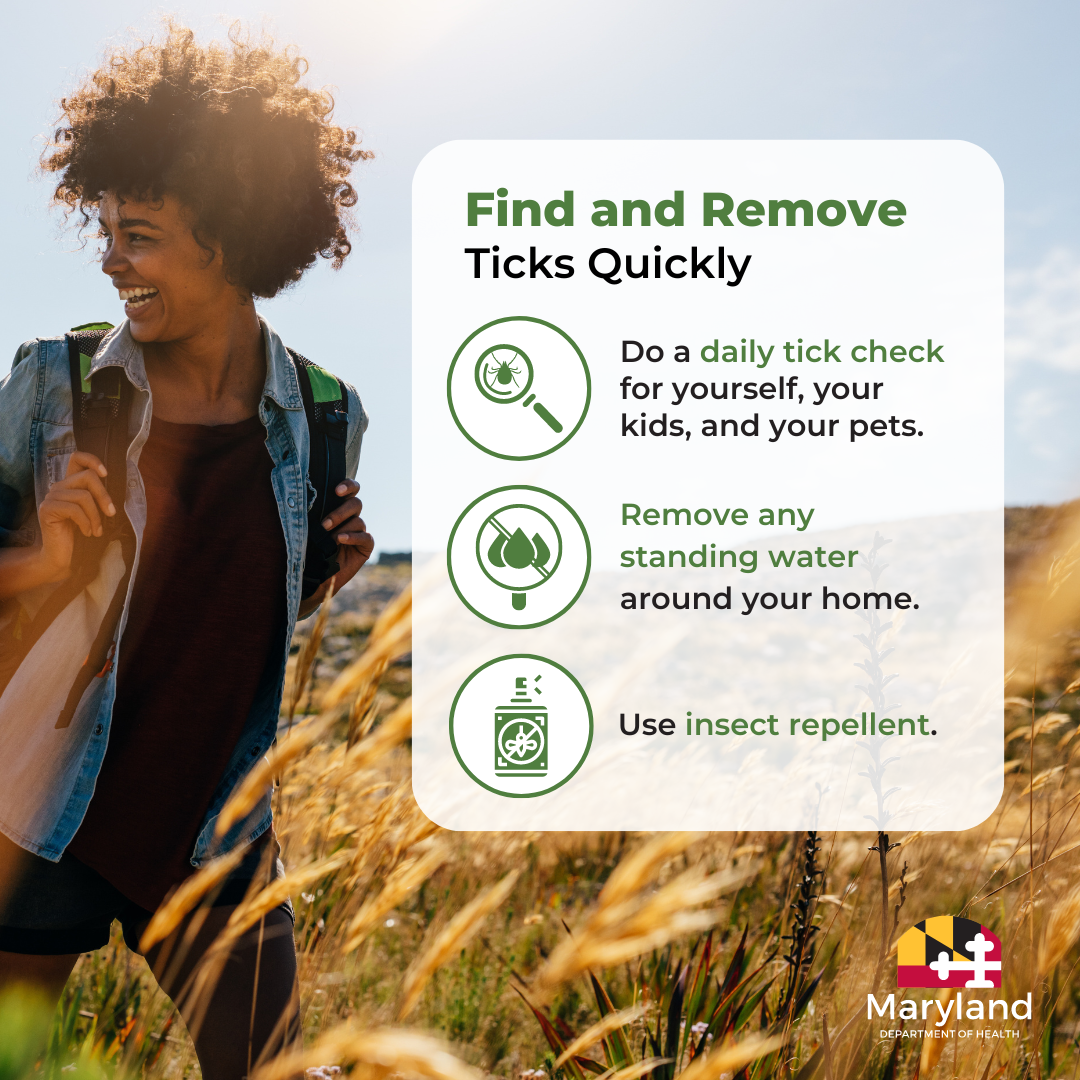
May 3, 2024
Media Contact:
Chase Cook, Director, Office of Communications, 410-767-8649
Maryland Department of Health urges Marylanders to guard against tickborne diseases
Baltimore, MD – To recognize May as Tickborne Disease Awareness Month, the Maryland Department of Health recently launched a tickborne disease prevention campaign encouraging Marylanders to take simple precautions to prevent illness caused by infected ticks in time for warmer spring weather and increased outdoor activity.
“We want Marylanders to explore the beautiful nature found in our great state,” said Maryland Department of Health Secretary Dr. Laura Herrera Scott. “But we want them to safeguard their health and be mindful of ticks and the diseases they spread.”
In an effort to reduce the spread of disease, the tickborne disease prevention campaign will provide Marylanders with weekly tips on what to do before, during, and after outdoor activities to prevent tick exposure and recognize the symptoms of tickborne diseases.

Lyme disease is the most commonly reported tickborne disease in Maryland. In 2022, more than 2,000 cases were reported in the state. Symptoms include rash, fever, headache, joint pain and fatigue. Lyme disease can spread to your joints and nervous system if left untreated. Contact your health care provider or local health department if any of these symptoms develop. Most cases of Lyme disease can be cured with antibiotics.
The best way to avoid tickborne diseases is to avoid ticks and their habitat. Ticks prefer humid environments and can be found outdoors in leaf litter, weeds, tall grasses, shrubs, and woods.
To prevent tick exposure and bites:
Use EPA approved insect repellents such as DEET, picaridin, or IR3535
Wear light colored clothing to help spot ticks more easily
Wear long pants and sleeves and tuck your pants into your socks or boots
Treat clothing and gear with products containing 0.5 percent permethrin
Consider purchasing permethrin treated clothing and gear
Stick to marked paths when hiking and avoid brushy areas and tall grass
Shower as soon as possible after returning indoors
Dry your clothes on high heat for 10 minutes once you get home to kill any ticks on clothing
Perform a tick check on yourself, children, and pets after being outside in a tick habitat
Talk to your veterinarian about ways to protect your pets
While Lyme disease is the most prevalent tickborne disease in Maryland, ticks can also transmit babesiosis, ehrlichiosis, anaplasmosis, Rocky Mountain spotted fever, and tularemia. Spring is the start of tick season, but Marylanders should continue to check for ticks after outdoor activities through the fall.
To learn more about tickborne diseases and ways to protect your family and pets, visit health.maryland.gov/tick.
For weekly updates on protecting you and your family against tickborne diseases, follow the Department throughout May on Facebook and Instagram.
###
The Maryland Department of Health is dedicated to protecting and improving the health and safety of all Marylanders through disease prevention, access to care, quality management and community engagement.
Follow for more updates: Facebook, Instagram, X, YouTube and LinkedIn.

